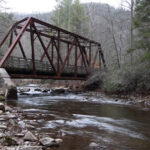Building a 70 Mph Electric Bike sounds exhilarating, promising a blend of bicycle agility with motorcycle speed. However, before you embark on this ambitious project, it’s crucial to understand the significant challenges and potential pitfalls involved. Simply pushing a regular e-bike to such extreme speeds isn’t just about more power; it’s about component durability, safety, and practicality. Exceeding typical e-bike speeds drastically increases stress on every part of your bike, potentially leading to frequent failures and dangerous situations. If you’re frequently hitting speeds over 50mph, you’re likely already pushing your current setup beyond its intended limits.
Power Requirements for Extreme E-bike Speeds
Achieving and maintaining 70 mph on an electric bike demands immense power. Physics dictates a significant power increase for even a slight speed gain. For instance, increasing your speed from 60 mph to 70 mph requires approximately 36% more power. According to calculations, sustaining 60 mph might need around 6800W at the wheel, while hitting 70 mph could necessitate a staggering 10,500 mechanical watts. Factoring in motor efficiency losses, you’ll need substantial battery capacity. For example, covering a 40km stretch at 70 mph could consume as much as 4.65kWh of battery energy. This translates to a very heavy and expensive battery pack, potentially pushing the limits of what’s feasible for a bicycle frame.
Component Selection for High-Speed E-bikes
Standard bicycle components are simply not designed for sustained 70 mph speeds. For wheels, consider robust, double-walled 65mm fatbike rims like Origin8 DAT-PRO-65. Wider rims might limit your tire choices, hindering the use of standard mountain bike or city bike tires. Expect to replace tires more often due to increased wear at high speeds. Stronger spokes, such as 13-14ga butted spokes, are advisable to handle the stress from powerful hub motors and high-speed riding.
For the front fork, a triple clamp style fork is highly recommended. Shortening the travel of a long-travel fork can enhance its strength and stiffness, making it more suitable for high-speed stability while retaining a somewhat bicycle-like appearance. Similarly, a suspension seatpost like a Thudbuster can improve comfort and control at 70 mph, allowing the use of a stronger, more affordable hardtail frame that still resembles a traditional bicycle.
Rethinking Your High-Speed E-bike Project
While the idea of a 70 mph electric bike is captivating, the practical realities of building one on a bicycle frame are daunting. The cost, complexity, and safety concerns are significant. Carrying over 5kWh of batteries and a heavy hub motor on a bicycle frame strong enough to withstand 60-70 mph speeds essentially negates the inherent advantages of a bicycle.
A more pragmatic and safer approach might be to consider electrifying a road-legal motorcycle. This platform is inherently designed for higher speeds and heavier loads, making it a more suitable base for achieving true 70 mph performance in an electric two-wheeled vehicle. Building a 70 mph electric bike from scratch is a considerable undertaking, and exploring alternatives like electric motorcycles could offer a more realistic and safer path to high-speed electric mobility.

